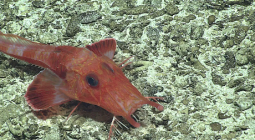Mercury pollution at Eraring power plant rose 130% in 12 months

Environment groups say increased pollution levels means it would be ‘absurd and harmful’ to extend life of Eraring, which is due to close in August 2025
Mercury and particulate pollution from Australia’s largest coal-fired power station soared last year, prompting an environmental group to argue it would be “absurd and harmful” for the New South Wales government to extend its operations.
Origin Energy’s 2,880-megawatt Eraring power station, slated by the company to close in August 2025, reported mercury pollution jumped 130% in 2022-23 compared with the previous year, according to data from the national pollution inventory. The heavy metal permanently damages brains and kidneys, especially those of children.
The plant, near Lake Macquarie, also reported an 88% increase in PM2.5 particle (particles with a diameter of 2.5 micrometres or less) pollution. Emissions of PM10 particles (particles with a diameter of 10 micrometres or less) emitted by Eraring also rose 16%, while sulfur-dioxide pollution rose 15%.
Two other NSW power stations also reported large increases of toxic pollutants. Sulfur-dioxide emissions from Delta Electricity’s Vales Point plant rose 47%, while AGL Energy’s Bayswater power station posted a 48% rise in mercury pollution and a 32% increase in PM2.5 particle emissions.
The not-for-profit legal group Environment Justice Australia said the emissions increases came even as electricity output from NSW’s power stations fell 2.9% in 2022-23 from a year earlier. Output at Eraring was up 10.7%, increased 4% at Vales Point and fell 5.2% at Bayswater – changes smaller than the rise of their key pollutants.
Mike Campbell, an executive member of the Central Coast Community Environment Network, called for action to stop continued pollution from coal-fired power stations.
“Now is the time to phase out polluting coal power and replace it with renewable energy that doesn’t harm human health or the climate,” he said.
“Our community has had enough of the asthma, the heart disease, the babies born with serious health conditions all related to air pollution from coal power stations.”
The NSW government is expected to announce soon whether it will subsidise Origin to extend part or all of the Eraring plant to reduce the risk of blackouts during high-demand periods. One energy analyst has put the likely cost at $150m a year. Environmental Justice Australia said it would be “absurd and harmful” to extend the life of the facility.
Tony Chappel, chief executive of the NSW Environment Protection Authority, said his agency would soon finalise a public review of all power station licences in the state, which it started late last year.
“This follows the introduction of tightened air emission limits, including for mercury, and strengthened monitoring and reporting requirements on licence variations for all coal fired power stations in July 2020,” Chappel said.
“The latest report shows a decrease in major air emissions in 2022-23 due to lower quantities of coal being burned and a downward trend in particle emissions, with significant decreases since the installation of best practice filtration systems.”
An EPA spokesperson added that coal plants did not exceed their licence limits for mercury pollution in the 2022-23 year. However EnergyAustralia’s Mt Piper power station and Vales Point did report minor breaches for solid particles and sulfur dioxide, respectively. Those breaches were deemed administrative in nature.
NSW’s mercury emissions were also below the highest levels reported from power stations in Victoria and Queensland.
Guardian Australia approached the NSW government and the Environment Protection Authority for comment.
An Origin spokesperson said the company was “committed to safely operating our power assets and we aim to minimise their impact on the environment and communities”.
“We closely monitor emissions performance and Eraring continues to remain well beneath its emissions licence limits,” the spokesperson said, adding that the pollution changes reflected “an increase in Eraring’s output in order to meet the power needs of the market”.
A spokesperson for AGL said the company had not exceeded emissions limits during the year: “At the Bayswater power station, we use several methods to limit air emissions from our operations such our continuous emissions monitoring systems and baghouse filtration plant.”
Steve Gurney, a Delta spokesperson, said EJA’s claims were “highly selective”, noting Vales Point’s 10% increase in mercury pollution in 2022-23 overlooked a 27% reduction in the previous year.
Gurney said the NSW government’s annual air quality statement found the state “experienced the best air quality on record across many measures in 2022”, with no days of “extremely poor air pollution levels”.
“Ambient air quality continues to be very good in the area around Vales Point as well as all of Lake Macquarie and the Central Coast,” he said, adding Australia’s sulfur dioxide was “one of the tightest in the world”.
The Australian Energy Council, a lobby group representing the big generators, said overall PM2.5 emissions were down 3.7% for the year and were about one-fifth lower over the past five years.
But overall mercury emissions showed “an unexpected increase last year of almost 11% after four consecutive years of decreases”, the council said.
“A range of factors can result in noticeable shifts in emissions, particularly year-on-year, such as demand and availability of plant,” a council spokesperson said. “Plant performance will also depend on how often they are dispatched by the market operator, changes in the operations of the plant and the quality of the coal used.”
The council said coal-fired power stations supplied 63.4% of Australia’s electricity in 2022-23, down 0.6 percentage points for the year.
Cover photo: Eraring power station reported major increases in pollutant emissions over 2022-23, according to data from the National Pollution inventory. Photograph: Harlz/Getty Images/iStockphoto









